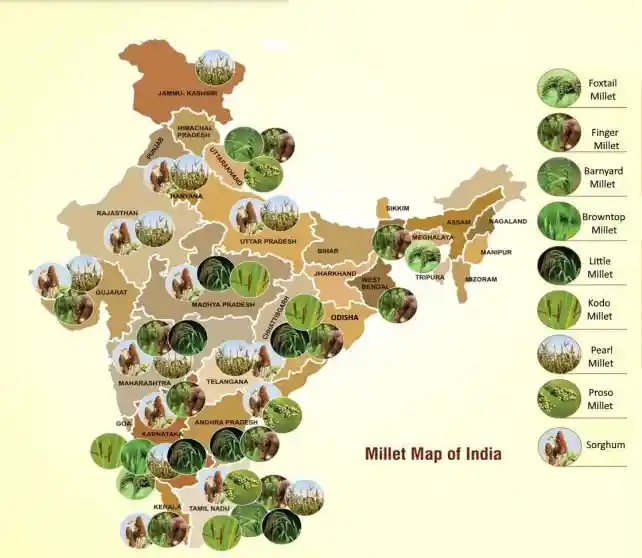India, the world’s largest producer of millets, is planning to position these as short grains superfoods with immense health benefits as it gears up to showcase 2023 as the International Year of Millets. Creating awareness on their immense health benefits, cooking techniques and production – these grains are drought resistant and can be grown even in arid and semi arid areas will be taken up in a mission mode. According to sources Prime Minister Narendra Modi will actively spearhead the mission that is expected to play an important role in enhancing the food and economic security of the country amid increasing risks related to geopolitics and climate change.
On December 21, Modi savoured a lunch in Parliament. The lunch consisted of various kinds of millet.
“As we prepare to mark 2023 as the International Year of Millets, attended a sumptuous lunch in Parliament where millet dishes were served. Good to see participation from across party lines,” Modi said in a tweet after the lunch.
As the Food and Agriculture Organisation and the United Nations among others are making efforts to promote millets in regular diets to combat climate and global food security challenges, India is set to take pole position in production of the coarse cereals.
Millets will also form an integral part of the G-20 meetings. An official statement said that delegates will be given a true millet experience through tasting, meeting farmers and interactive sessions with start-ups and Farmer Producer Organisations (FPOs).
According to the United Nations, more than 90 million people in Africa and Asia depend on millets in their diets. Africa accounts for more than 55 per cent of global production, followed by Asia with nearly 40 per cent, while Europe represents around three per cent of the world market.
CV Ratnavathi, who took charge as the Acting Director of ICAR-Indian Institute of Millets Research last year, told India Narrative that the immediate challenge for the association is to increase production and create awareness especially in the rice consuming states.
After the success of Odisha’s millet mission, Assam, primarily a rice eating state also launched a similar programme to promote consumption of the short grains. Odisha, also a rice consuming state, introduced millets for the government’s public distribution system (PDS) while incentivising farmers to grow more of these short grains.
“It is important to note that the millet mission has been a big success in Odisha despite rice being the primary cereal consumed in the state. Similarly, other states in India, especially where rice is the dominant staple food, need to be made aware of their health benefits as well as the fact that they are easier to cultivate,” Ratnavathi said, adding that the majority of the Indians do not even know how to cool the grains.
“Our institute is also planning to organise cooking programmes..these grains need to be cooked in a different style, so it is important to provide cooking classes as well,” she said. The problem also arises with the multiple types of millets, which have their own cooking techniques.
Ratnavathi added that while several states are looking to make millets part of the PDS programme, it is key to increase production for its continuous supply.
“When you have a continuous supply of the millets, only then can you make them part of the PDS,” she said.
India is also among the top five exporters of millets in the world. Exports of millets increased from $400 million in 2020 to $470 million in 2021. As food security concerns rise amid the rising commodity prices driven by the Russia-Ukraine war, the importance of millets will rise further.
Also read: In message to FAO, PM Modi calls for a global mass movement to promote millets




















